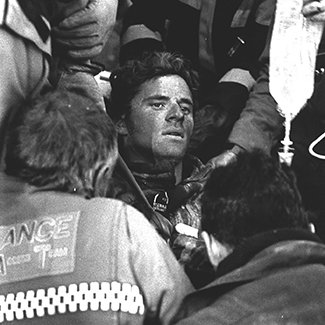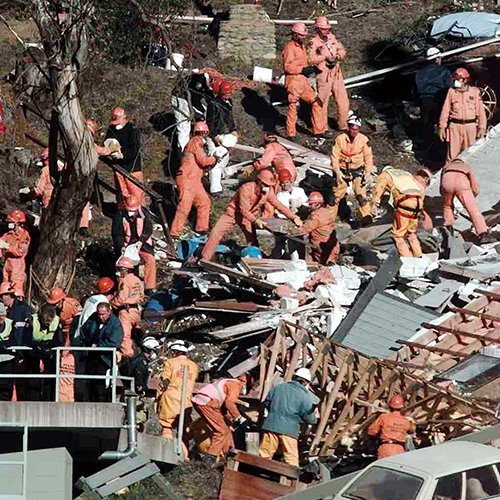On this day: Thredbo landslide

HALF AN HOUR before midnight on Wednesday 30 July 1997, a deep rumble shook the sleeping residents of Thredbo, New South Wales. Roughly 1000 tonnes of mud, rock and trees had collapsed from the slope on the side the Alpine Way road which leads into the the small ski town.
The debris pulled Carinya Ski Lodge from its base, and then hit Bimbadeen Lodge before it slowed, destroying both buildings and burying the people within.
The NSW Fire Brigades Centre at Wollongong had taken the first emergency calls by 11:37pm, but to the frustration of rescuers, operations had to wait for first light.
The first body was recovered on Thursday night and three more were found the next day. On Friday afternoon, assistant commissioner Ken Moroney told reporters the chances of finding any further survivors were extremely remote.
Survivor uncovered: Stuart Diver
That was until 5:50am on Saturday – over 55 hours after the landslide had hit – when the voice of 27-year-old ski instructor Stuart Diver, was heard from beneath the wreckage.
Stuart and his wife had been staying on the ground floor of Bimbadeen. Following the landslide, debris had encased Stuart on his back, unable to move but protected by mattresses and broken furniture.
Stuart lay in the dark for three days before rescue teams reached him. As water and mud rose around him, he pressed his nose into the concrete above to take oxygen in. His wife, Sally, had drowned, despite his efforts to hold her out of the rushing water.
Stuart had endured three nights of freezing temperatures, and was suffering from severe hypothermia. Rescuers drilled through concrete and passed down a hose to expel warm air, and continued to speak to him as they worked.
Finally, after a ten-hour rescue operation, Stuart was lifted free. He was greeted by cheers from rescue workers, residents and Aussies all over the nation who were following on television.
Of the 19 people that were buried, Stuart was the only one to survive.
A subsequent investigation found that the poor state of the Alpine Way, as well as a leaking water main underneath it, were the cause of the landslide.
Lessons in disaster management
The landslide and the deaths it caused were a source of lasting trauma for the community, but they did lead to the development of new disaster response, coordination and management techniques.
“In the sixteen years since the landslide, we have changed and moulded how we work to better suit a changing disaster environment.” says Mark Crosweller, director-general of Emergency Management Australia.

Rescuers work their way through the landslide rubble. (Credit: AP)
Greg Mullins, commissioner of Fire and Rescue NSW, says emergency response teams have become much more structured. “It’s a lot more sophisticated in terms of the equipment and expertise, and it’s a lot better coordinated in terms of using engineers, doctors, paramedics and hazardous materials specialists.”
These teams, particularly the NSW contingent, are now taking their skills abroad – often being among the first to respond when disasters happen. According to Greg, when the Christchurch earthquake struck in 2011, the New South Wales taskforce was there within 26 hours – the first international team to arrive.
READ MORE:

